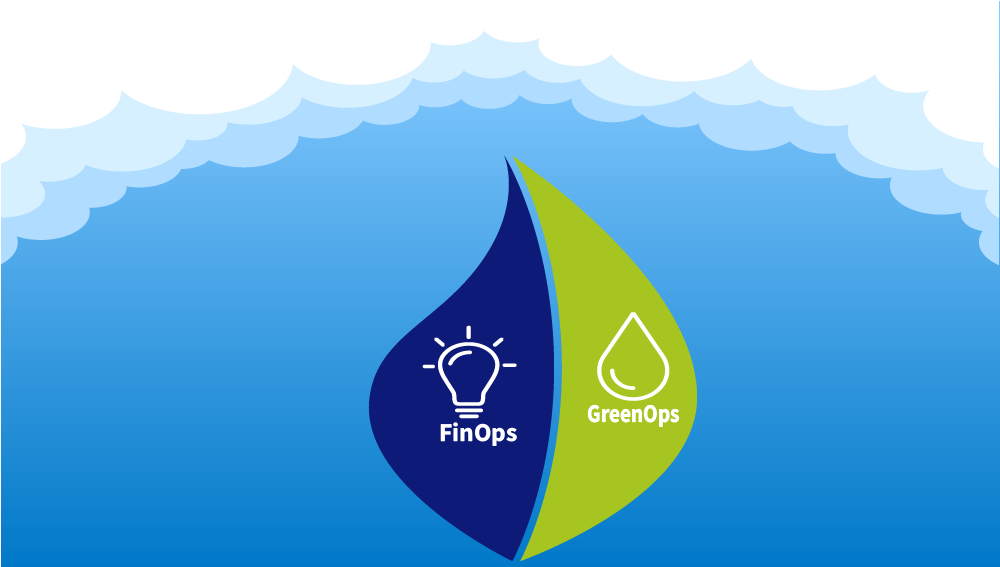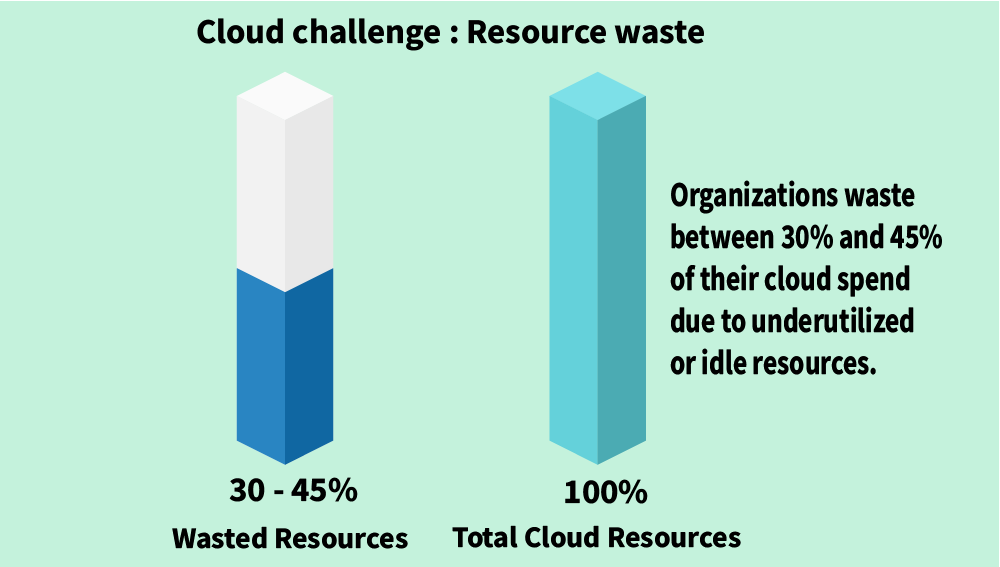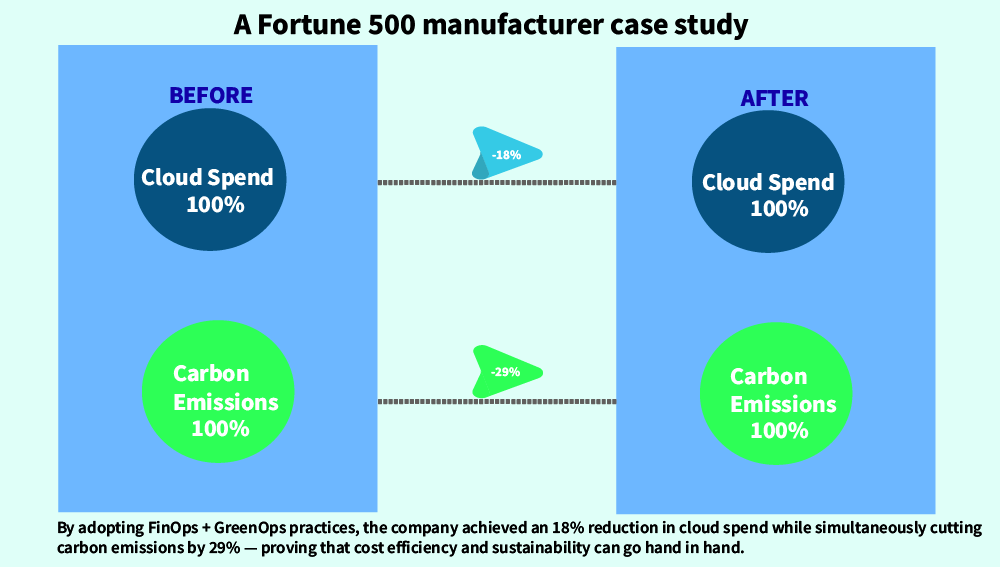FinOps + GreenOps: Unlocking Financial Efficiency and Sustainability in the Cloud

What if every dollar saved in the cloud also reduce your carbon footprint? Welcome to the dual mandate of modern IT leadership.
In today's hypercompetitive digital landscape, organizations face twin challenges: reining in runaway cloud costs while meeting increasingly urgent sustainability targets. The powerful combination of FinOps and GreenOps is helping forward-thinking companies optimize their cloud investments while advancing environmental goals—proving that financial efficiency and sustainability can create a time-sensitive competitive advantage.
The Cloud Challenge: Balancing Growth, Cost, and Impact
The cloud revolution promised scalability but introduced significant hidden costs:
- Financial drain: Organizations waste between 30-45% of cloud spend on underutilized or idle resources
- Environmental footprint: Data centers now contribute approximately 2% of global carbon emissions, comparable to the entire airline industry

These parallel challenges demand a unified approach that addresses both the financial and environmental dimensions of cloud computing.
Understanding the Complementary Frameworks
FinOps: Financial Governance in the Cloud
FinOps brings financial accountability to the variable spend model of cloud, focusing on:
- Creating cost transparency across teams and workloads
- Establishing shared ownership of cloud expenditure
- Implementing continuous resource optimization

GreenOps: Sustainability as a Strategic Imperative
GreenOps extends cloud management to include environmental considerations:
- Measuring carbon emissions of digital operations
- Optimizing for energy efficiency alongside performance
- Prioritizing renewable energy-powered infrastructure
When implemented together, these practices multiply their impact—the same actions often reduce both costs and emissions simultaneously.
Quick Reference:
CSRD: Corporate Sustainability Reporting Directive (EU regulation requiring standardized ESG reporting)
Carbon Intensity: Measure of how much CO₂ is emitted per unit of energy produced
PUE: Power Usage Effectiveness (ratio of total facility energy to IT equipment energy)
The Business Case: Dual Benefits
The integration of FinOps and GreenOps delivers compelling advantages that outpace competitors:
1. Simultaneous Cost and Carbon Reduction
-
Resource optimization:
- Right-sizing instances cuts both your bill and energy consumption
- Eliminating over-provisioning saves 20-30% on average
-
Automated governance:
- Removing idle resources prevents wasted money and energy
- Automatic tagging ensures accurate cost and carbon allocation
A Fortune 500 manufacturer implementing this approach reduced cloud spend by 18% while cutting associated emissions by 29% —demonstrating the powerful synergy between these disciplines.
2. Breaking Down Organizational Silos
By bringing together finance, operations, and sustainability teams around shared goals, organizations can:
- Develop unified metrics that matter to multiple stakeholders
- Create dashboards that track financial and environmental KPIs side-by-side
- Foster cross-functional collaboration on optimization initiatives
3. Future-Proofing Against Regulatory Changes
As sustainability reporting frameworks gain traction globally, integrated FinOps and GreenOps strategies position companies to:
- Meet emerging compliance requirements proactively
- Build reporting capabilities before they become mandatory
- Demonstrate sustainability leadership to investors and customers
Practical Implementation Strategies
Establish Dual-Purpose Metrics
Monitor both financial efficiency and environmental impact to identify high-value optimization opportunities:
- Cost per transaction alongside carbon per API call
- Infrastructure efficiency vs. energy efficiency
- Utilization rates with corresponding emissions impact
Leverage Automation for Continuous Optimization
-
Auto-scaling wins:
- Match resources with actual demand patterns
- Prevent overspending during low-traffic periods
-
Intelligent scheduling:
- Automatically shut down dev/test environments during off-hours
- Run batch processes when energy is cleaner and cheaper
-
AI-driven optimization:
- Identify anomalies in both spending and resource utilization
- Receive proactive recommendations for improvement
Make Strategic Infrastructure Choices
- Deploy to cloud regions with lower carbon intensity (many providers now publish this data)
- Select instance types with better performance-per-watt metrics
- Optimize data storage and transfer patterns to minimize both costs and emissions
Overcoming Common Challenges
Organizations implementing this integrated approach may encounter:
- Measurement complexity: Tracking both financial and environmental metrics can be overwhelming → Start with key workloads and gradually expand your monitoring scope
- Resistance to change: Teams may hesitate to add sustainability to their objectives → Link environmental performance to recognized business outcomes and incentives
- Short-term cost considerations: Some sustainable options may have higher upfront costs → Calculate total cost of ownership, including reputation benefits and compliance advantages
SME Applications: Scale Doesn't Matter
The FinOps + GreenOps approach isn't just for enterprises. Small and mid-sized businesses can:
- Implement basic cloud cost monitoring with provider tools
- Focus on the highest-impact optimizations first (rightsizing, scheduling)
- Use the financial savings to fund more sustainable choices
- Market their cloud efficiency as part of their sustainability story
Leading the Future of Cloud Excellence
The convergence of FinOps and GreenOps represents more than a trend—it's becoming the new standard for responsible cloud operations.
"Implementing integrated FinOps and GreenOps has transformed how we approach cloud governance. We're seeing 22% cost reduction while advancing our sustainability goals—proving these objectives can reinforce each other."
Organizations that master this integrated approach will:
- Achieve greater cost predictability while reducing waste
- Build resilience against evolving market expectations
- Align technology operations with broader corporate sustainability commitments
- Create competitive differentiation in an increasingly eco-conscious market
Taking Action Today
Ready to audit your cloud strategy for both financial and environmental optimization? Follow these steps:
- Conduct a basic assessment of your top 5 cloud workloads
- Identify quick wins where cost and carbon can be reduced simultaneously
- Implement a unified dashboard for tracking progress
- Build cross-functional teams with shared optimization objectives
By embracing the FinOps + GreenOps mindset, you're not just optimizing today's operations—you're building a foundation for sustainable digital transformation that balances financial goals with environmental responsibility.
